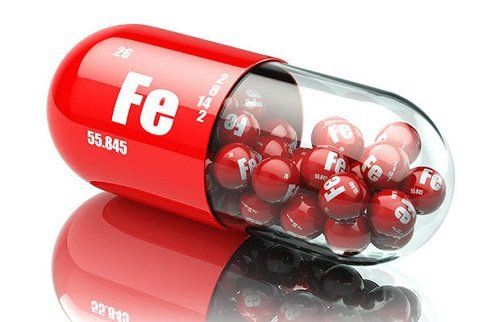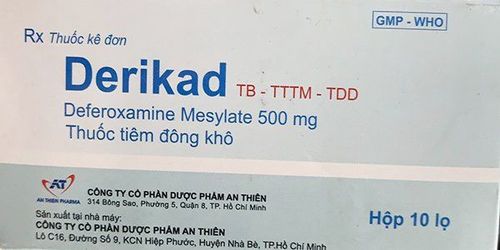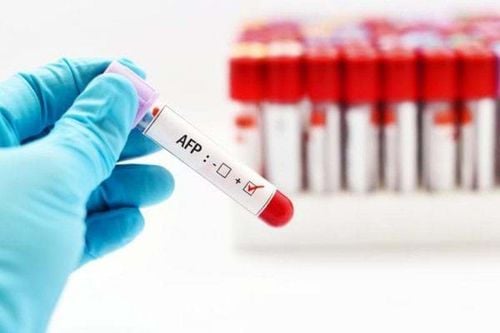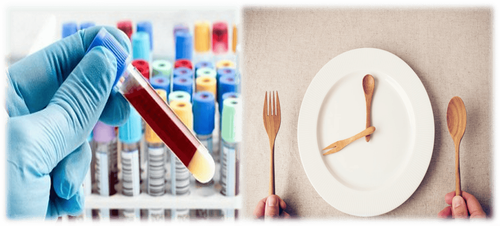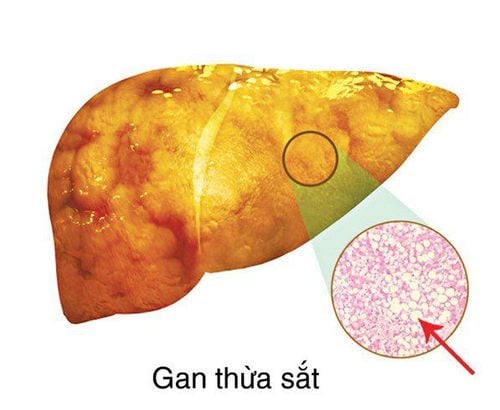This is an automatically translated article.
Serum iron test aims to check the iron levels in your body. So what is a serum iron test or serum iron quantification? The following article will help you better understand serum iron and ferritin blood tests, as well as know when to measure serum iron.
1. What is a serum iron test?
Iron is an essential nutrient that, among other functions, is required for the production of healthy red blood cells (RBCs). It is an important part of hemoglobin, the protein in RBCs that binds with oxygen in the lungs and releases it when the blood circulates to other parts of the body. The serum iron test measures the amount of iron in the liquid portion of blood. Besides, Iron is an essential mineral to create red blood cells. Red blood cells carry oxygen from your lungs to the rest of your body. Iron is also important for healthy muscles, bone marrow and organ function. Iron levels that are too low or too high can cause serious health problems
Serum iron is almost always measured with other iron tests, such as serum ferritin, transferrin, and total binding capacity. with iron (TIBC). These tests are often ordered at the same time and the results are interpreted together to help doctors diagnose and monitor iron deficiency or iron overload.
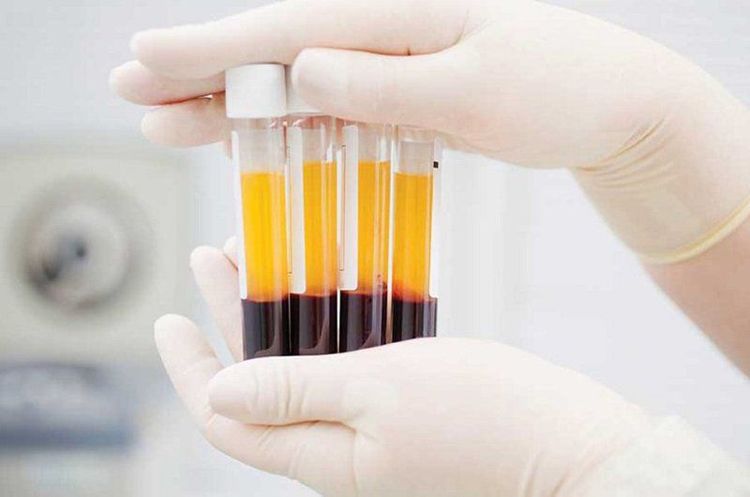
Lượng huyết thanh hầu như được đo bằng các xét nghiệm sắt.
The body cannot produce iron and must absorb it from the foods we eat or from supplements. Once absorbed, it is transported throughout the body by binding to transferrin, a protein produced by the liver.
In healthy people, most of the iron absorbed is incorporated into the hemoglobin inside red blood cells. The rest is stored in tissues as ferritin or hemosiderin, with a small amount of the extra used to produce other proteins such as myoglobin and some enzymes.
Insufficient circulating and stored iron can eventually lead to iron deficiency anemia (decreased hemoglobin). In the early stages of iron deficiency, there is usually no physical effect and iron stores can be significantly depleted before any signs or symptoms of iron deficiency appear. If a person is otherwise healthy and has been anemic for a long time, symptoms rarely appear before the hemoglobin in the blood drops below the lower-than-normal limit.
However, as iron deficiency progresses, symptoms eventually begin to develop. The most common symptoms of anemia include fatigue, weakness, dizziness, headache, and pale skin.
On the other hand, too much iron can be toxic to the body. Blood iron levels and iron stores increase when more iron is absorbed than the body needs. Absorbing too much iron can lead to an increasing accumulation and harm to organs such as the liver, heart and pancreas. An example of this is hemoglobinopathy - an inherited disease in which the body absorbs too much iron, even in a normal diet. Additionally, iron overdose can occur when someone consumes more than the recommended amount of iron.
2. When to measure serum iron
A ferritin test is usually ordered when doctors are concerned that a person has too little iron in their blood. Having too much or too little iron in your blood can lead to health problems.
Your doctor will recommend a serum ferritin test if:
Your symptoms or medical history suggest that you may have too little iron Your symptoms or medical history suggest that you may have too much. iron Another blood test that shows you may have a problem with too little iron Another test that shows you may have a problem with too much iron (less common) You have a medical condition other medical conditions that put you at risk of iron deficiency (such as chronic kidney disease) Pregnant women Previous iron tests have shown difficult results You have previously had abnormal serum ferritin and need to periodic monitoring There is a concern about iron overdose (such as accidental overdose or overload in children due to excessive blood transfusion) You have: joint pain, fatigue, weakness, lack of energy, abdominal pain, loss of sex drive, damage to organs such as the heart and liver. The most common reason for a serum ferritin test is anxiety about iron deficiency anemia. In fact, it is the best single iron test that can be used to diagnose that condition.

Xét nghiệm huyết thanh để chuẩn đoán chính xác bệnh thiếu máu
Anemia is a medical condition in which a person has a reduced number of normally functioning red blood cells. Since iron is necessary for your red blood cells to be healthy, not having enough iron can lead to this condition. This can cause symptoms such as fatigue, dizziness, weakness, and pale skin.
A major test that can indicate iron deficiency anemia is the CBC (Blood Cell Analysis). This may indicate a lower than normal amount of hemoglobin and hematocrit than normal red blood cells. Often, however, an iron test such as serum ferritin is needed to confirm this.
A person may not have enough iron in their blood for a number of different reasons. Example:
Not getting enough iron through diet or supplements Iron needs have increased (eg pregnancy) Women with excess iron loss due to heavy menstrual periods People suffering from chronic blood loss (eg, from colon cancer) People who can't absorb iron adequately (eg, because of celiac disease) Women are more susceptible to iron-deficiency anemia than men, partly because of blood loss when menstruation. However, it is important to investigate iron-deficiency anemia in men. A menopausal man or woman with iron deficiency anemia is more likely to have a serious underlying condition.
Less commonly, serum ferritin may be used to help diagnose or rule out other conditions, such as:
Inflammatory anemia Genetic diseases that can cause anemia (such as hemoglobinopathy) ) Genetic diseases that cause too much iron to build up (ie hemoglobinopathy) Lead poisoning
3. Serum iron test results
The normal range of values is:
Iron: 60 to 170 micrograms per deciliter (mcg/dL), or 10.74 to 30.43 micromol per liter (micromol/L) Total Iron Binding Capacity (TIBC): 240 to 450 mcg/dL, or 42.96 to 80.55 micromol/L Transferrin saturation: 20% to 50% The numbers above are common measurements for the results of these tests. The range of normal values may vary slightly between different laboratories.
However, serum iron levels are often evaluated along with other iron tests. A summary of changes in iron testing in different diseases for iron status is presented in the table below:
| Bệnh | Sắt | TIBC/Transferrin | UIBC | % Transferrin Bão hòa | Ferritin |
| Thiếu sắt | Thấp | Cao | Cao | Thấp | Thấp |
| Hemocromatosis/Hemosiderosis | Cao | Thấp | Thấp | Cao | Cao |
| Bệnh mãn tính | Thấp | Thấp/Bình thường | Thấp/Bình thường | Thấp/Bình thường | Cao/Bình thường |
| Bệnh mãn tính | Thấp | Thấp/Bình thường | Thấp/Bình thường | Thấp/Bình thường | Cao/Bình thường |
Iron deficiency The first stage of iron deficiency is the gradual depletion of iron stores. This means that there is still enough iron to make red cells but the stores are using it up without a proper replacement. Serum iron levels may be normal during this period, but ferritin levels will be low.
As iron deficiency continues, all stored iron is used up and the body tries to compensate by producing more transferrin to increase iron transport. Serum iron levels continued to decrease and transferrin, TIBC (Total Iron Binding Capacity) and UIBC (Unsaturated Iron Binding Capacity) increased. As this stage progresses, fewer and fewer red blood cells are produced, eventually leading to iron deficiency anemia.
Iron overload If iron levels are high, TIBC, UIBC, and ferritin are normal, and the person has a clinical history consistent with iron overdose, it is likely that the person has iron poisoning. Iron poisoning occurs when large amounts of iron are taken at once or for a short time. Iron poisoning in children is almost always acute, occurring in children who have taken iron supplements from their parents. In some cases, acute iron poisoning can be fatal. A person with an HFE gene mutation is diagnosed with an inherited hemoglobinopathy. However, while many people with hemoglobinopathy will have no symptoms throughout life, others will begin to develop symptoms such as joint pain, abdominal pain, and weakness in their 30s or 40s. He is affected more often than women because women lose blood during their reproductive years through menstruation. Iron overload can also occur in people with hemosiderosis and those who have received multiple blood transfusions. . This can happen with sickle cell anemia, thalassemia major, or other forms of transfusion-dependent anemia. Iron from each unit of blood transfused stays in the body, eventually causing large accumulations in tissues. Some people who drink alcohol and have chronic liver disease also develop iron overload.
4. Things to keep in mind when testing for serum iron
Iron levels can vary, depending on how recently you've eaten foods and taken iron-containing supplements. Your doctor will likely ask you to do this test in the morning or after fasting.
Certain drugs may affect the results of this test. Your doctor will let you know if you need to stop taking any medications. DO NOT stop any medication before talking to your provider.
Drugs that can affect test results include:
Antibiotics Birth control pills and estrogen
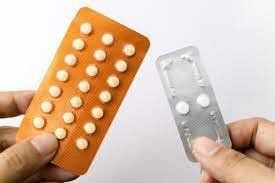
Các loại thuốc có thể gây ảnh hưởng đến kết quả xét nghiệm huyết thanh
Blood pressure medication Deferoxamine cholesterol lowering drug (removes excess iron from the body) Testosterone gout medicine To get accurate results, patients need to conduct tests at a reputable hospital with current equipment system. grand. Currently, the Hematology Department (Blood Complete Blood Test) - Vinmec International General Hospital is one of the leading prestigious addresses in the country, trusted by a large number of patients for examination and treatment. Thanks to the use of modern machines and equipment to check and analyze blood, it has provided accurate information on red blood cells, white blood cells, platelets, hemoglobin,... Overall assessment of the health status of the person being tested, early detection of the disease and suggestions for timely treatment. In particular, with a space designed according to 5-star hotel standards, Vinmec guarantees to bring patients the most comfort, friendliness and peace of mind when visiting and receiving treatment at the hospital.
Please dial HOTLINE for more information or register for an appointment HERE. Download MyVinmec app to make appointments faster and to manage your bookings easily.




